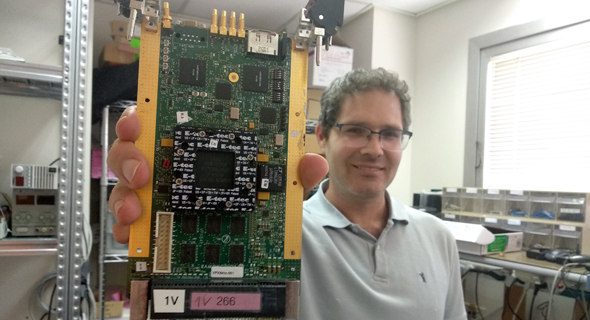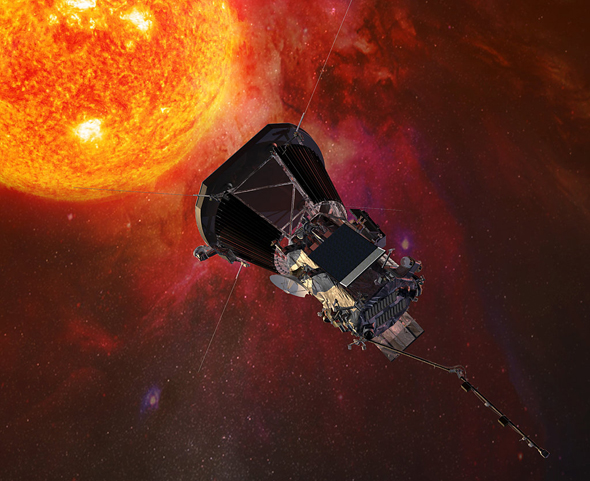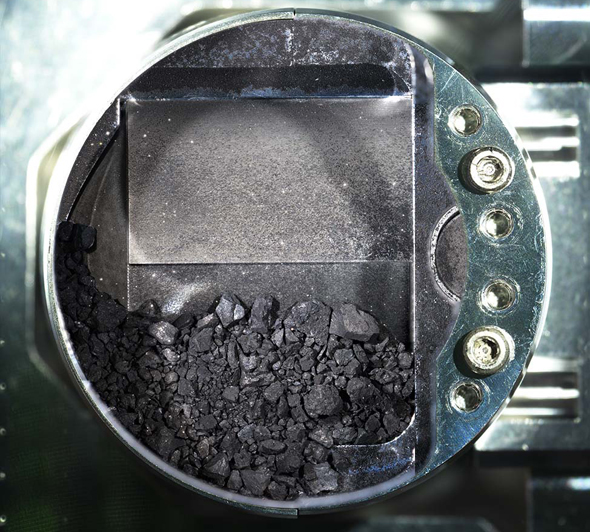Interview
Israeli spacetech company is delivering products that are literally out of this world
Ramon.Space’s disruptive supercomputer technology has been a core component of over 50 space missions
14:0719.02.21
Very few things can withstand the harsh conditions of space, and even the most sophisticated technology can become faulty and inoperable. One Israeli spacetech company, Ramon.Space, understands that things work differently outside of the Earth’s atmosphere. The Yokneam-based company develops supercomputer hardware and software that can process colossal amounts of data in space and can function in the most austere conditions. While a country as young as Israel may not have a long list of impressive space missions behind it; the technology that has powered over 50 international space exploration missions is blue-and-white-made.
 Ramon.Space CEO Avi Shabtai. Photo: Ramon.Space
Ramon.Space CEO Avi Shabtai. Photo: Ramon.Space
 Ramon.Space's supercomputer with machine learning components. Photo: Ramon.Space
Ramon.Space's supercomputer with machine learning components. Photo: Ramon.Space
 Ramon.Space's Virtual Radiation Shield technology was incorporated on board NASA's Parker probe to the Sun (illustration). Photo: NASA
Ramon.Space's Virtual Radiation Shield technology was incorporated on board NASA's Parker probe to the Sun (illustration). Photo: NASA
 Rock samples obtained from the 162173 Ryugu asteroid by the Hayabusa-2 spacecraft were done using Ramon.Space's technology. Photo: JAXA
Rock samples obtained from the 162173 Ryugu asteroid by the Hayabusa-2 spacecraft were done using Ramon.Space's technology. Photo: JAXA
Ramon.Space was founded in 2004, after the Columbia shuttle disaster in which Israeli astronaut Ilan Ramon perished and the company’s name is a tribute to him. “Ramon.Space has a long space heritage behind it,” CEO Avi Shabtai told CTech, and noted that Ramon’s wife, Rona, was very supportive and honored by the gesture.
 Ramon.Space CEO Avi Shabtai. Photo: Ramon.Space
Ramon.Space CEO Avi Shabtai. Photo: Ramon.Space Ramon.Space, formerly named Ramon Chips, is a leader in the local spacetech sector and is adapting to the needs of the growing market. “There’s a sudden need for more applications in space, and we’re striving to make systems smarter and more autonomous,” he said.
Bringing supercomputers to space
The company develops supercomputers that are capable of storing anywhere between 200 and 300 gigabytes of data, compared to standard PCs whose hard drives can only store 30 gigabytes. “We’re bringing supercomputing to space, enabling new services and applications. We want to be able to explore new worlds, or do things that have never been done before,” he said, adding that “to overcome barriers, we require the proper technology.”
“As JFK once said, space is hard,” Shabtai quipped, explaining that there are several factors that limit standard electronics’ capacity to work in space. “As they leave the atmosphere, spacecraft are exposed to radiation that causes malfunctions in electronic equipment and can damage silicon components in chips. We needed to design something that would be radiation-hardened, meaning that the electronics can tolerate the harsh radiation in space. This is done not by wrapping up our chips in metal or lead, instead, it is incorporated into the chips themselves,” he said, explaining that this is done by taking one element that is radiation-tolerant and attaching it to another enabling both to be virtually radiation-tolerant.
A second factor is the ability to operate in extremely high or low temperatures. “There’s no ability to dissipate heat in space. You can’t just turn on a fan and cool the hardware because there is no air in space, and you need to limit the amount of power you consume. We found the right methods to cool down heated-electronics. While spacecraft are mainly dependent on solar panels, they aren’t always exposed to the Sun and rely on batteries, and this required us to design a form of highly efficient power consumption.”
“There also isn’t any ability to conduct maintenance in space, so everything we do must work, be remotely-programmable, and allow us to update the software in space from Earth, as well as overcoming any problems that may arise,” he said, adding that these complex qualifications must be embedded in the supercomputers. In addition, the technology needs to be operable in an environment without gravity and survive the grueling conditions of launches.
While space tech startups are typically focused on developing rocket launching technology, the abilities of supercomputing and advanced computing are just as important, Shabtai noted. “We really need to be able to use Earth-like capabilities, only in space. Data processing needs to be performed in space, and in a much more efficient and faster way. We need to figure out how we can gather, store, and access all that data.”
 Ramon.Space's supercomputer with machine learning components. Photo: Ramon.Space
Ramon.Space's supercomputer with machine learning components. Photo: Ramon.Space Ramon.Space has engineered a Virtual Radiation Shield that was most recently used by NASA’s Parker probe to the Sun, enabling it to obtain high-quality images. What did that entail?
“Our method wasn’t a standard method that wrapped chips in metal sheets, instead it utilized our radiation-hardened technology,” he said. “Information obtained by spacecraft may be damaged in space, and we needed to ensure that it wasn’t corrupted or compromised in some way after being exposed to the Sun. We used a digital algorithm to solve the problem,” he recalled. “Some of our onboard components include one or two of the processing units and some of the temperature sensors and cameras.”
What other missions has Ramon.Space’s technology been used in?
“So far, our technology has been used in over 50 different space missions,” he noted, including the JAXA Hayabusa-2 spacecraft, which traveled some nine million miles to reach a small asteroid named 162173 Ryugu and retrieved samples, which it returned to Earth on Dec. 6. “If you think about it, there is still a component of Israeli technology on that asteroid that was involved in picking up the rock samples.”
The company’s tech has also been used by Russia’s ExoMars Trace Gas Orbiter; NASA’s Cygnus weather satellite constellation which is used for hurricane research; and the European Space Agency’s JUICE mission to Jupiter. “We’re selling through many different channels, so we aren't yet aware of all the missions we’re part of,” he added.
 Ramon.Space's Virtual Radiation Shield technology was incorporated on board NASA's Parker probe to the Sun (illustration). Photo: NASA
Ramon.Space's Virtual Radiation Shield technology was incorporated on board NASA's Parker probe to the Sun (illustration). Photo: NASA What makes Ramon.Space a crucial part of the local Israeli space tech ecosystem?
“Israel has been involved in space for many years, but Ramon.Space is the jewel in the crown of the entire ecosystem. We’re not just recreating existing technologies, we’re disrupting the system, and moving space to the digital era."
“We have the most advanced computing technology for space that is being developed in Israel. This will give Israel the ability — once spacetech makes up a bigger chunk of the economy — to allow us to leverage Ramon.Space and make it an important part of digitizing the space era. Some companies are five years behind us in that aspect. Israel can be a much more dominant player in the NewSpace sector.”
Astronomical financial ambitions
While the company has yet to go public and is not revealing its financials, Shabtai said that it is currently being supported by venture capitalists. “We are focused on increasing our worldwide presence and building our business,” he said, noting that it doubled its revenues in 2020 and generated a backlog of orders for years to come. It recently opened its first U.S. location in Palo Alto, California.
“As fusion between the Earth and space markets increase, we’ll see more money flowing into the space economy as well as more investments. Israel is heading toward an era of spacetech entrepreneurship; we’re starting but we’re not there yet.”
 Rock samples obtained from the 162173 Ryugu asteroid by the Hayabusa-2 spacecraft were done using Ramon.Space's technology. Photo: JAXA
Rock samples obtained from the 162173 Ryugu asteroid by the Hayabusa-2 spacecraft were done using Ramon.Space's technology. Photo: JAXA What types of future missions will be possible with your technology?
“I think the general trend is to expand human space exploration, but it can also be used for Earthbound capabilities such as viewing any location on Earth in real-time from your cell phone.” As for what the future holds, he remained hopeful. “I think that if you put enough Israeli entrepreneurs in one room, they’ll figure it out. You'll find a few solutions.”



